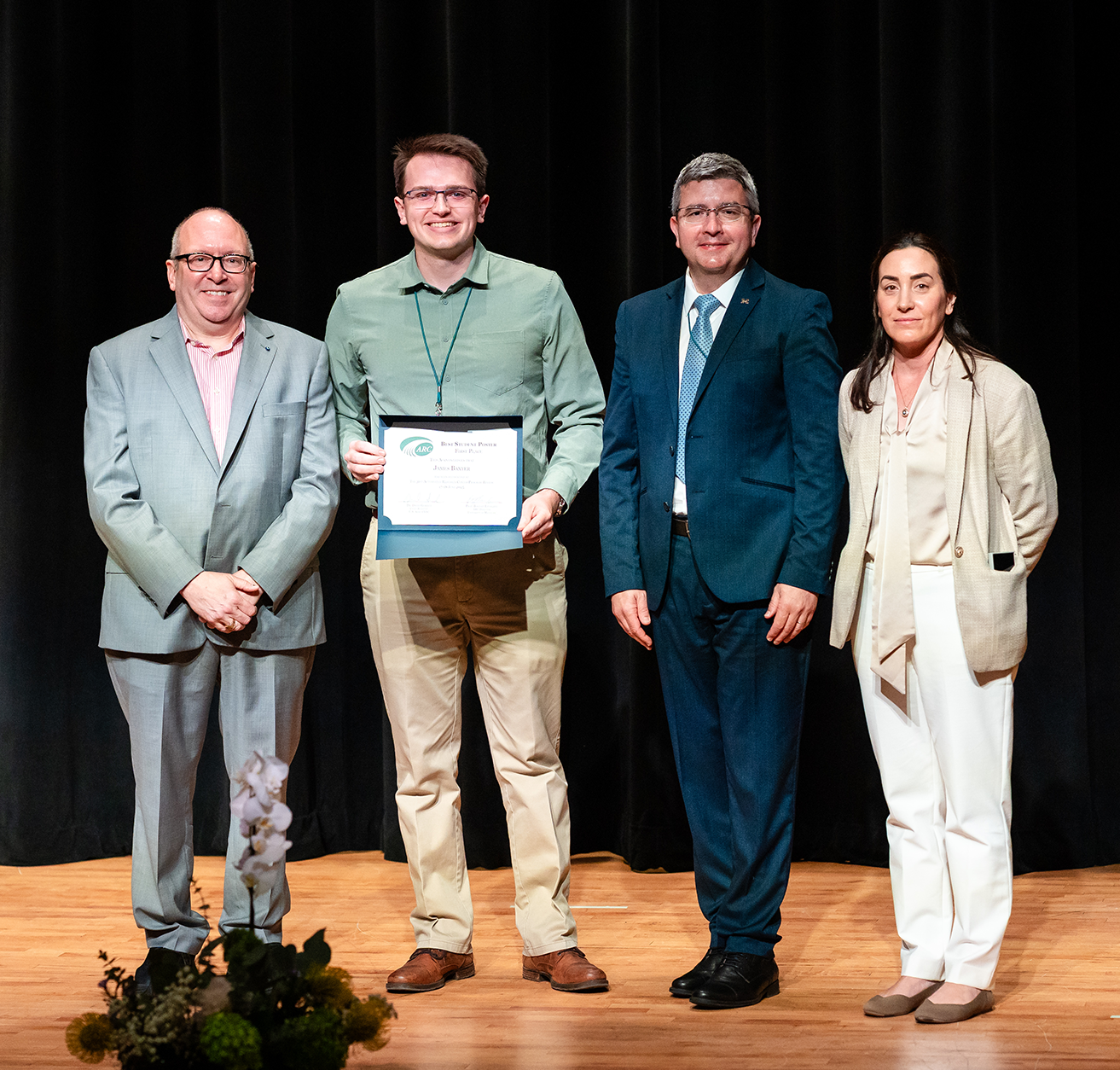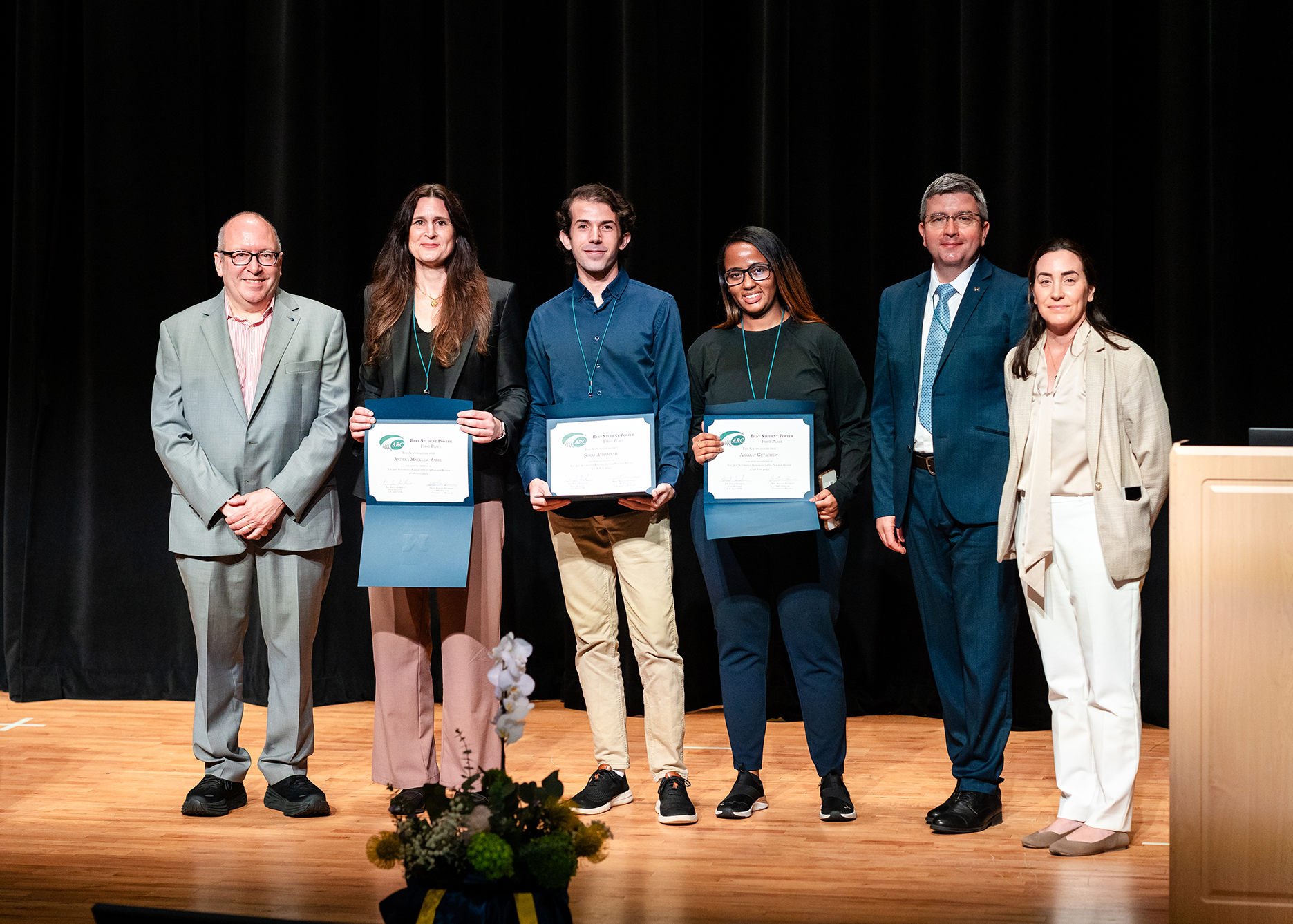Empowering the Next Generation: ARC Celebrates Student Excellence and U.S. Army-Focused Innovation

At the 2025 ARC Annual Review, held June 17–18 in Ann Arbor, the Automotive Research Center (ARC) proudly spotlighted the next generation of defense innovators through its signature student recognition programs—the ARC Excellence in Research Award (ARC-ERA) and the Best Student Poster Competition. These programs are not just accolades—they are deliberate investments in building a robust pipeline of scientific and engineering talent for the U.S. Department of Defense.
“These awards are a cornerstone of our strategy to develop a technically skilled and mission-aligned workforce for the Army and the broader DoD,” said Prof. Bogdan Epureanu, Director of the ARC. “They identify and elevate those students whose research and leadership potential are already shaping the future of mobility, autonomy, and systems integration.”
“Supporting and recognizing these students is critical for sustaining innovation within the Army enterprise,” added Dr. David Gorsich, Chief Scientist at the U.S. Army Ground Vehicle Systems Center (GVSC). “They are the future experts who will bridge science, engineering, and military needs.”
These recognitions not only celebrate individual excellence but also demonstrate ARC’s vital role in preparing the future workforce for the U.S. Army Ground Vehicle Systems and allied defense sectors.
ARC Excellence in Research Award: Investing in Transformative Potential
“The ARC-ERA is designed to identify and support the next generation of research leaders whose work will directly impact ground vehicle technologies and the Army’s future capabilities,” said Prof. Kira Barton, ARC Associate Director and Coordinator of the ARC-ERA Selection Committee. “This year’s recipient exemplifies that vision.”
Out of 30 applications submitted across the ARC network, Devavrath Raghunath, a Master’s student in Mechanical Engineering at the University of Michigan, Ann Arbor, was selected as the recipient of the 2025 ARC Excellence in Research Award. He conducts research in the Structural Dynamics and Controls Lab under the guidance of Prof. Kon-Well Wang and served as the Drivetrain lead at Raftar Formula Racing, IIT Madras, while pursuing his undergraduate degree.
“It is an honor to be selected for the ARC-ERA,” said Devavrath Raghunath. “This award allows me to deepen my contributions to high-impact research that serves national security objectives while expanding my training in dynamics and control.”
Best Student Poster Competition: Spotlight on Excellence in Army-Relevant Research
“This competition is a celebration of our students’ ability to translate cutting-edge science into solutions for real Army needs,” said Dr. Talia Sebastian, Deputy Chief Scientist at GVSC and Chair of the Poster Award Selection Committee. “Through rigorous evaluation and direct engagement, we identified the projects that stood out in both technical merit and potential impact.”
With 32 eligible posters and a highly competitive review process, six finalists were selected. The judging process combined evaluation of submitted poster PDFs and in-person discussions with the student authors during the Day 1 poster session. After a final round of assessment, two teams were selected as co-winners:

Co-Winner: James Baxter (University of Michigan)
Poster Title: “Resilient Trajectory Planning for Extreme Mobility on Challenging Slopes”
“I’m very honored by this recognition,” said James Baxter. “This award motivates me to continue my work that pushes the boundaries in extreme autonomous mobility.”
“James is developing path-planning strategies that directly address the Army’s operational constraints,” said Prof. Tulga Ersal and Prof. Bogdan Epureanu, his advisors. “His work not only advances autonomy but also demonstrates deployable innovation for complex environments.”

Co-Winners: Andrea Macklem-Zabel, Solaf Athamnah, and Absalat Getachew (Oakland University)
Poster Title: “Dynamic Allocation of Information Through Auditory, Visual, and Haptic Interfaces to Minimize Cognitive Burden and Maximize Performance During Crew-AI Teaming”
“We’re incredibly thankful to ARC and GVSC for supporting research that centers the human in human-autonomy teaming,” said Andrea Macklem-Zabel on behalf of the team. “It’s exciting to see our interface design work recognized in a defense innovation context.”
“This team has shown exceptional initiative in integrating multimodal sensing and cognitive science to improve mission performance,” said Prof. Wing-Yue Geoffrey Louie, their adviser. “Their user-focused approach is exactly what the Army needs for successful crew-AI collaboration.”
Finalists
In addition to the winners, four other finalists were recognized for their outstanding contributions:
- Doruk Aksoy (U-M) & Motaz AbuHijleh (Oakland University)
Poster: “From Pixels to Paths: Tensor Network-Driven Behavioral Cloning for Autonomous Vehicles in Virtual Environments” - Du-Chin Liu (University of Iowa)
Poster: “Machine Learning-Augmented Multi-Fidelity Tire-Soil Interaction Model for Autonomous Off-Road Mobility Prediction” - Shay Snyder (George Mason University)
Poster: “Brain-Inspired Probabilistic Occupancy Grid Mapping with Hyperdimensional Computing” - Jungyun Lim (University of California, Irvine)
Poster: “Additively Manufactured All-Metallic Metamaterial Solutions for Protection of Electronic Systems in Autonomous Vehicles”
“These finalists are solving some of the most complex technical challenges in Army mobility, autonomy, and survivability,” said Dr. Sebastian. “Their creativity and execution make it clear that the future of defense research is in very capable hands.”
Shaping the DoD Workforce of Tomorrow
The ARC-ERA and Poster Competition represent more than recognition—they are strategic tools for identifying and empowering future leaders in Army-relevant science and engineering.
“We’re not just training students—we’re building the Army’s next-generation workforce,” said Prof. Epureanu. “These awardees are the ones who will translate scientific discoveries into deployable capabilities.”
“Programs like these ensure continuity of innovation,” added Dr. Gorsich. “By investing in these students, we are ensuring the Army’s future ability to adapt to battlefield challenges.”

